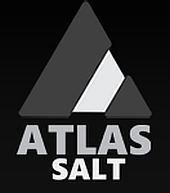 Coro Mining plans to drill 2,800 metres at Marimaca
Coro Mining plans to drill 2,800 metres at Marimaca
CORO PROVIDES UPDATE FOR ITS MARIMACA PROJECT
Coro Mining Corp. is providing an update on drilling at its Marimaca project, located 22 kilometres east of the port of Mejillones in the II Region of Chile, as well as an update on progress at its 65-per-cent-owned operating subsidiary, SCM Berta (SCMB), located in the III Region.
Marimaca drilling update
On April 28 and May 6 2016, Coro released the results of 16 reverse circulation drill holes, all of which intersected significant leachable copper mineralization, with the bottom of this mineralization undefined in many of the holes and the lateral limits of mineralization also undefined.
In late June, a six-hole, 2,000-metre diamond drill program was initiated, including twinning four of the previous RC holes, as well as providing samples for metallurgical test work and specific gravity measurements. All four twin holes have been completed, and assay results of this program will be released as they are received, but visual comparisons between the core and the original RC assays indicate good correlation.
A 12-hole, 3,190-metre RC confirmation program on an approximately 50-metre-by-50-metre infill grid was initiated in July and is almost complete. Depth of visible leachable mineralization averages 150 metres to 200 metres from surface and good visual continuity of mineralization within an area of 500 metres by 300 metres is apparent, still open in all directions. A 14-hole, 2,800-metre RC program on an approximately 100-metre-by-100-metre step-out grid is planned to test an area of 650 metres by 550 metres defined by the greater-than-200-part-per-million copper anomaly and containing the area previously drilled. Additional holes are planned to test other targets to the east.
Marimaca geology and mineralization
The Marimaca deposit is hosted by Jurassic-age coarse-grained dioritic rocks which have been strongly affected by east-dipping north-south-oriented fracturing related to a branch of the Atacama fault zone. Subsequent east-dipping, northeast-southwest-oriented feeder structures, possibly Riedel shears associated with northwest-southeast shearing were related to the introduction of copper mineralization. Postprimary mineralization andesite dikes and sills crosscut the area and may host weak copper oxides. Primary mineralization at Marimaca has been shown to consist of hairline to centimetric veinlets of chalcopyrite-magnetite with accompanying strong potassic alteration; very little disseminated sulphides have been noted. This primary mineralization has been subject to secondary enrichment so that the chalcopyrite has been enriched to chalcocite and covellite. Subsequent deep oxidation and remobilization has taken place, and the deposit is a now an oxidzed enrichment blanket with the distribution and grade of copper mineralization controlled by fracture density. Dominant copper oxides are brochantite and chrysocolla with minor wad and tenorite.
Alan Stephens, president and chief executive offier, commented: “We are very pleased with the progress of our drilling campaign, which is expected to be complete by September, with all assays received by October. The extent and depth of the mineralization drilled to date suggests that the deposit may be bigger than first thought, and an initial resource estimate is scheduled for completion before year-end.”
SCM Berta update
Year to date, SCMB has produced 777 tonnes of copper and has not yet reached commercial production. The current capacity of the plant is approximately 250 tonnes per metre but it has only been operating at approximately 52 per cent due to start-up and commissioning activities in the first quarter of 2016, and less-than-expected production from non-Berta dump material in the second quarter of 2016 due to recovery issues. The Nora plant has not yet met breakeven thresholds, but this is expected to improve in the third quarter of 2016 when SCMB shifts to production from Berta material.
The expansion of the Nora plant from 3,000 tonnes per year to 5,000 tonnes per day of copper cathode is substantially complete, and the company has decided to accelerate the installation of the Berta leach pads and crusher in order to capitalize on the currently favourable capital cost environment, and to reduce the operating costs of processing Berta materials. Further details are contained in the company’s management’s discussion and analysis to be released shortly.
Sergio Rivera, vice-president of exploration of Coro Mining, a geologist with more than 32 years of experience, and a member of the Colegio de Geologos de Chile and of the Instituto de Ingenieros de Minas de Chile, was responsible for the design and execution of the exploration program, and is the qualified person for the purposes of National Instrument 43-101. Alan Stephens, FIMMM, president and chief executive officer of Coro Mining, a geologist with more than 40 years of experience, and a qualified person for the purposes of NI 43-101, is responsible for the contents of this news release.
http://www.coromining.com/s/newsreleases.asp
































